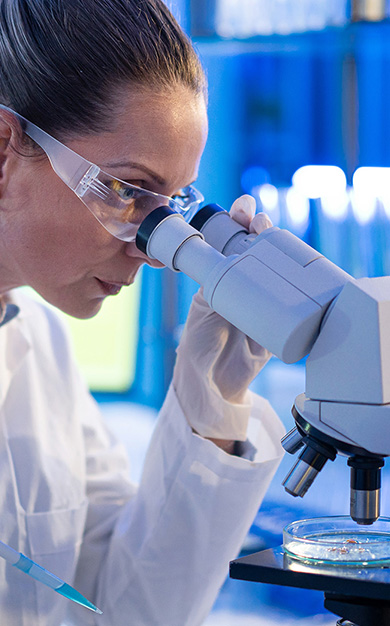The Latest on LATE: A New Form of Dementia
Written By: BrightFocus Editorial Staff
Written By: BrightFocus Editorial Staff

Learn about a new form of dementia, called LATE. The article discusses how many people may have this form of dementia, the brain regions that are affected by this disorder, how it is currently diagnosed, and the next steps for research.
This is a summary of a more comprehensive article on LATE.
At the request of the National Institutes of Health, a group of neurodegenerative disease experts in topics ranging from neuropathology, psychiatry, gerontology, brain imaging and epidemiology (the study of how often diseases occur in different groups of people and why) met in late 2018 to consider better defining or re-conceptualizing a group of brain abnormalities and related symptoms that appeared to represent a previously poorly described (or understood) disease.
The experts coined a new descriptive term, “Limbic-predominant Age-related TDP-43 Encephalopathy”, or LATE, to recognize and define this new disease and the major brain areas affected. They noted that the brain abnormalities are strongly associated with a dementia that can mimic Alzheimer’s disease (AD) or frontotemporal dementia (FTD).
LATE is different from other brain diseases associated with the TDP-43 protein, including forms of frontotemporal lobar degeneration, AD, and amyotrophic lateral sclerosis (ALS). This conclusion is based on where the TDP-43 protein is found in the brain, symptoms, and epidemiology.
Notably, in community-based observational studies, LATE is estimated to be present in up to 50 percent of older adults, usually referring to those over 70 – 80 years of age, with many not yet diagnosed with the symptoms of dementia. LATE has an enormous, but largely unrecognized public health impact, among persons age 80 years of age and older.
Currently, LATE can only be diagnosed exclusively by laboratory testing of the brain after death to establish the presence, abundance and distribution of the TDP-43 protein deposits. For these reasons, a working group was convened to develop diagnostic criteria for LATE, aiming to both stimulate research and to promote awareness of this pathway to dementia.
Although LATE appears to primarily affect the medial temporal lobe of the brain, imaging studies have demonstrated that individuals with LATE also have atrophy (the wasting away and death of cells) in the frontal lobes and other brain regions.
Genetic studies have indicated that a number of genes appear to increase the risk for LATE. These discoveries suggest that LATE shares features of frontotemporal lobe dementia that that is associated with the TDP-43 protein as well as AD, but also that there may be other underlying mechanisms.
There remain many gaps in our understanding of LATE, including the absence of a diagnostic method, such as a blood test or brain imaging, for clinical detection of LATE. Not only is more research needed to develop a diagnostic tool, but also to better define the disease’s risk factors and begin testing possible therapies in clinical trials.
BrightFocus Foundation is a premier global nonprofit funder of research to defeat Alzheimer’s, macular degeneration, and glaucoma. Since its inception more than 50 years ago, BrightFocus and its flagship research programs—Alzheimer’s Disease Research, Macular Degeneration Research, and National Glaucoma Research—has awarded more than $300 million in research grants to scientists around the world, catalyzing thousands of scientific breakthroughs, life-enhancing treatments, and diagnostic tools. We also share the latest research findings, expert information, and resources to empower the millions impacted by these devastating diseases. Learn more at brightfocus.org.
Disclaimer: The information provided here is a public service of BrightFocus Foundation and is not intended to constitute medical advice. Please consult your physician for personalized medical, dietary, and/or exercise advice. Any medications or supplements should only be taken under medical supervision. BrightFocus Foundation does not endorse any medical products or therapies.
Every Donation is a Step Forward in the Fight Against Alzheimer’s
Your donation powers cutting-edge research and helps scientists explore new treatments. Help bring us closer to a cure and provide valuable information to the public.
Donate Today